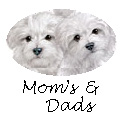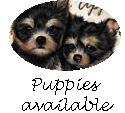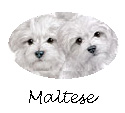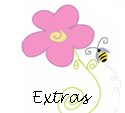|

View video of the Yorkshire Terrier (courtesy of AKC)
Originating in the UK in the 1800's the
Yorkshire Terrier is small (only 23 cms high) but it is an alert and
confident little dog. Developed by miners in the West Riding of
Yorkshire for ratting the Yorkshire is an amalgam of the Skye, Dandie
Dinmont and Maltese Terrier. The long silky coat of the Yorkshire is a
steely blue on the body with areas of golden tan on the head although
new born pups are black in color. The Yorkie is also known as the
broken haired Scottish Terrier.
General Appearance
That of a long-haired toy terrier whose blue and
tan coat is parted on the face and from the base of the skull to the
end of the tail and hangs evenly and quite straight down each side of
body. The body is neat, compact and well proportioned. The dog's high
head carriage and confident manner should give the appearance of vigor
and self-importance.
Head
Small and rather flat on top, the skull not too
prominent or round, the muzzle not too long, with the bite neither
undershot nor overshot and teeth sound. Either scissors bite or level
bite is acceptable. The nose is black. Eyes are medium in size and not
too prominent; dark in color and sparkling with a sharp, intelligent
expression. Eye rims are dark. Ears are small, V-shaped, carried erect
and set not too far apart.
Body
Well proportioned and very compact. The back is
rather short, the back line level, with height at shoulder the same as
at the rump.
Legs and Feet
Forelegs should be straight, elbows neither in
nor out. Hind legs straight when viewed from behind, but stifles are
moderately bent when viewed from the sides. Feet are round with black
toenails. Dewclaws, if any, are generally removed from the hind legs.
Dewclaws on the forelegs may be removed.
Tail
Docked to a medium length and carried slightly
higher than the level of the back.
Coat
Quality, texture and quantity of coat are of
prime importance. Hair is glossy, fine and silky in texture. Coat on
the body is moderately long and perfectly straight (not wavy). It may
be trimmed to floor length to give ease of movement and a neater
appearance, if desired. The fall on the head is long, tied with one
bow in center of head or parted in the middle and tied with two bows.
Hair on muzzle is very long. Hair should be trimmed short on tips of
ears and may be trimmed on feet to give them a neat appearance. Colors
Puppies are born black and tan and are normally darker in body color,
showing an intermingling of black hair in the tan until they are
matured. Color of hair on body and richness of tan on head and legs
are of prime importance in adult dogs, to which the following color
requirements apply:
- Blue: Is a dark steel-blue, not
a silver-blue and not mingled with fawn, bronzy or black hairs.
- Tan: All tan hair is darker at
the roots than in the middle, shading to still lighter tan at the
tips. There should be no sooty or black hair intermingled with any
of the tan.
- Color on Body: The blue extends
over the body from back of neck to root of tail. Hair on tail is a
darker blue, especially at end of tail.
- Headfall: A rich golden tan,
deeper in color at sides of head, at ear roots and on the muzzle,
with ears a deep rich tan. Tan color should not extend down on back
of neck.
- Chest and Legs: A bright, rich
tan, not extending above the elbow on the forelegs nor above the
stifle on the hind legs. Weight Must not exceed seven pounds.
Approved April 12, 1966
|






![]()